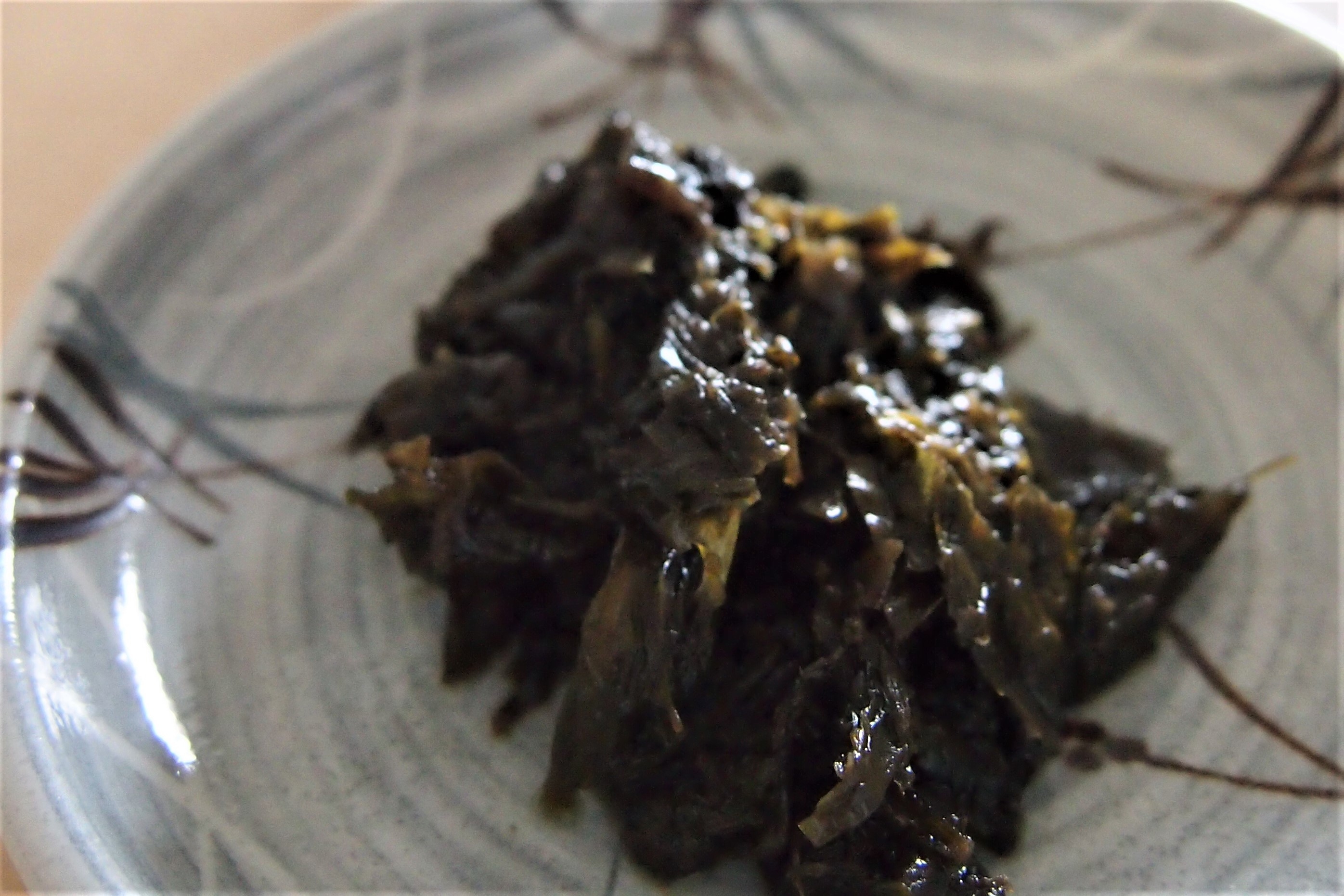
Literally translated as “olive vegetables”, one is often mistakenly informed that this Teochew specialty are “leaves of the Chinese relative of the olive tree”. In fact, kana-tsai is composed mainly of mustard leaves. Its history dates back to the Tang dynasty (AD 618–907).
The manufacturing process of kana-tsai is relatively simple: olives are first processed to get rid of the core and its bitter taste. Together with peanut oil, salt, garlic and crushed sesame, the olives and mustard leaves are boiled over low fire for a long time. The result is a flavoursome, dark-coloured mash of leaves, the olives having completely disintegrated. Because of the high salt and oil content, kana-tsai can be stored for a long period of time. Normally eaten as a side-dish to the famous Teochew rice congee, kana-tsai can be used in fried rice to create a completely different taste profile. More information about kana-tsai can be found here in Chinese.

